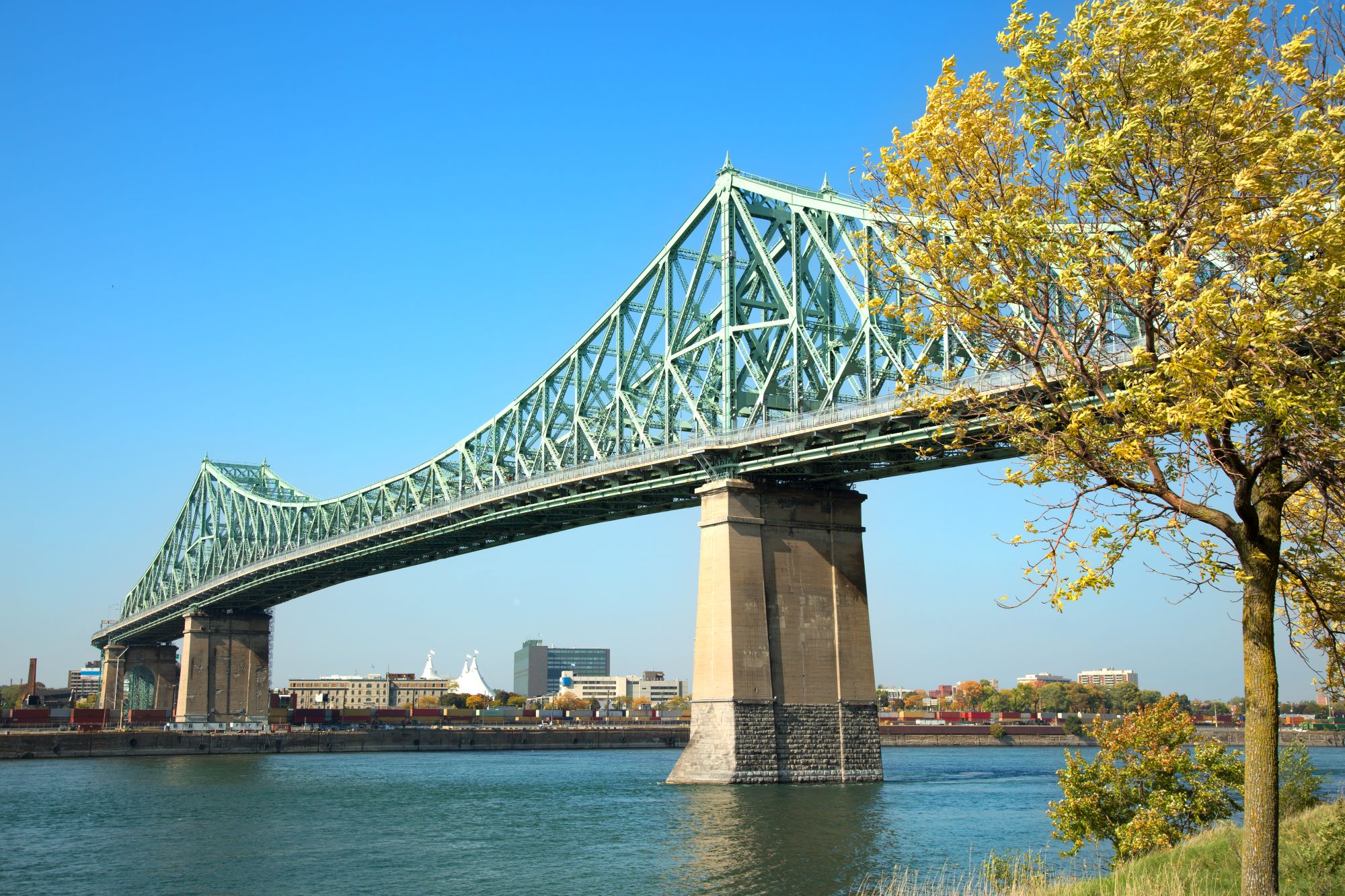Jacques Cartier Bridge

![]() Linking Montreal (De Lorimier Ave. and Papineau Ave.) and Longueuil (route 134)
Linking Montreal (De Lorimier Ave. and Papineau Ave.) and Longueuil (route 134)
The first “connected” bridge in the world
Measuring 2,765 metres long, 23 metres wide and made up of seven sections, Jacques Cartier Bridge is a steel truss cantilever bridge with 28 piers and 13 steel towers on pedestals. Linking Montreal to Longueuil with access to Île Sainte-Hélène, it includes five traffic lanes plus a sidewalk and bike path.
The project to build the bridge was initiated by the Montreal Harbour Commission (former name of the Port of Montreal) in response to demands for another link between the South Shore and Montreal, where the grain trade had been soaring to new heights since the 1920s.
Designed by engineer Philip Louis Pratley, the structure was opened in 1930 as the Harbour Bridge. At the time, there were only three lanes for traffic. The fourth and fifth lanes were added in 1956 and 1959 respectively, with the bike lane opening in 2002.
Over the years, a number of projects have been undertaken to improve and maintain the bridge. In 1957–1958, the southern section was raised to accommodate the new St. Lawrence Seaway. Between 1989 and 2004, the entire steel structure was cleaned and painted. The roadway was replaced in 2001–2002. Finally, in 2017, an LED lighting system was installed to produce colour illuminations and animations, making it the first “connected” bridge in the world.
The Jacques Cartier Bridge remains very popular as 90,000 to over 110,000 vehicles cross it every day.
